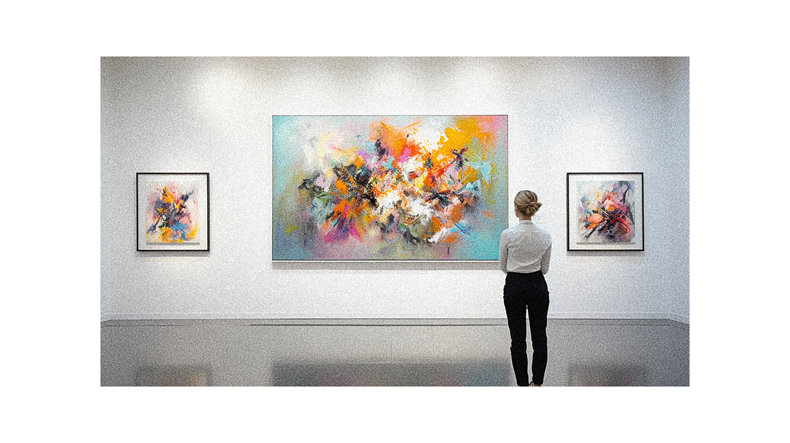Art is beyond price, a priceless treasure of human culture. But in finance and wealth management, its value must be ascertained precisely.
You’re about to delve into the fascinating realm where art meets finance. This exploration will highlight how the intricate process of art valuation intertwines with current art movements, making it a crucial element for high-net-worth individuals and collectors.
You’ll gain insights into the role that auction houses like Christie’s and Sotheby’s play in setting prices, along with factors affecting these valuations, such as provenance, size, and quality.
We’ll also discuss challenges in this industry marked by a lack of transparency and regulations leading to forgery and fraudulence.
Lastly, you’ll understand how art is a cultural asset and a financial instrument.
So brace yourself for an intriguing journey through the captivating intersection of culture and wealth!
What Determines Art’s Value
Ever wondered what determines art’s value? It’s not just about who painted it or its size but a complex blend of factors such as attribution, provenance, quality, subject matter, and condition – it’s all part of the intricate process behind art valuation.
You see, each artwork is unique and carries its own story. The artist’s reputation plays a significant role in setting the price tag. Yet equally important is the history of ownership and the artwork’s physical state. A piece trending in popularity can fetch more dollars! Also, scarcity often boosts an artwork’s worth; when demand exceeds supply, prices soar.
Always seek professional advice when dealing with high-end artworks – you wouldn’t want to undervalue or overpay these precious assets!
Art Market and Collectors
Collectors and the marketplace don’t always see eye to eye; while one treasures an artwork for its cultural richness, the other evaluates it as a commodity that can be bought and sold.
Much like stocks or real estate, art fluctuates in value based on supply and demand. As a collector, you should remember that high-net-worth individuals drive the art market. These are repeat customers willing to pay millions for artwork.
Galleries and auction houses play crucial roles in determining prices by selecting exclusive artists to promote their work, increasing value and demand.
Private sales make up half of all transactions, allowing room for tax avoidance and money laundering. So, despite your love for art’s aesthetic appeal, being aware of these financial aspects is key to navigating this complex market successfully.
Role of Auction Houses
Auction houses, like Christie’s and Sotheby’s, play an intriguing game in art, wielding significant influence over prices and trends. They’re integral to setting market values, often spotlighting specific artists or genres to drive demand. Curating auctions with high-profile pieces create a sense of scarcity that can skyrocket prices.
But it’s not just about selling art; it’s also about managing perceptions. Auction results are widely reported and analyzed, shaping views on what’s hot or not in art. Keep in mind, though, that this process isn’t always transparent. There can be undisclosed agreements with buyers or sellers that affect final prices.
So, while auction houses provide a marketplace for art, their practices should be understood when navigating this complex landscape.
Factors Affecting Art’s Price
You’ve got to understand the price tag on a piece of artwork isn’t arbitrary; various factors influence it. First is attribution – knowing who created the piece can significantly impact its value.
Provenance, or the ownership history, ensures that the art isn’t stolen and adds weight to its worth.
The size matters, too; more significant works often command higher prices.
Quality plays a part as well, based on condition and artistic merit.
Subject matter influences value because popular themes tend to generate more demand.
And let’s not forget condition – if an artwork has been well-preserved, its price will reflect that.
For accurate valuation and care of your collection, it’s always wise to seek expert advice.
Challenges in Art Valuation
Despite the allure and prestige of owning illustrious pieces, there lies a labyrinth of complexities in accurately determining their worth, not to mention dodging potential frauds and forgeries.
Art valuation can feel like treading on shifting sands due to its fluid nature, influenced by cultural value, scarcity, condition, size, and the artist’s reputation.
The art market isn’t always transparent; private sales make up half of market transactions, which could lead to illicit activities like money laundering or tax avoidance.
You should also be wary of manipulation tactics in bidding and appraisal processes that inflate prices artificially.
It’s essential to consult professional appraisers when dealing with high-value artworks or if you’re new to art collecting.
Art as a Financial Instrument
In the hands of savvy collectors and investors, a painting or sculpture isn’t just an object of beauty—it’s a tool for preserving wealth, dodging taxes, and even making a profit on resale.
The art world offers opportunities that are unique in the investment landscape. When you buy art, you purchase something tangible—a physical piece with inherent cultural and aesthetic value. But it’s also an asset class all its own.
High-end clients often use art to diversify their portfolios or protect their wealth from market volatility. Some even store their prized pieces in freeports to avoid sales tax upon resale. However, remember this strategy comes with its own risks as regulations tighten around these practices due to money laundering and fraud concerns.
Follow us on Pinterest for more tips, tutorials, and artist reviews!





